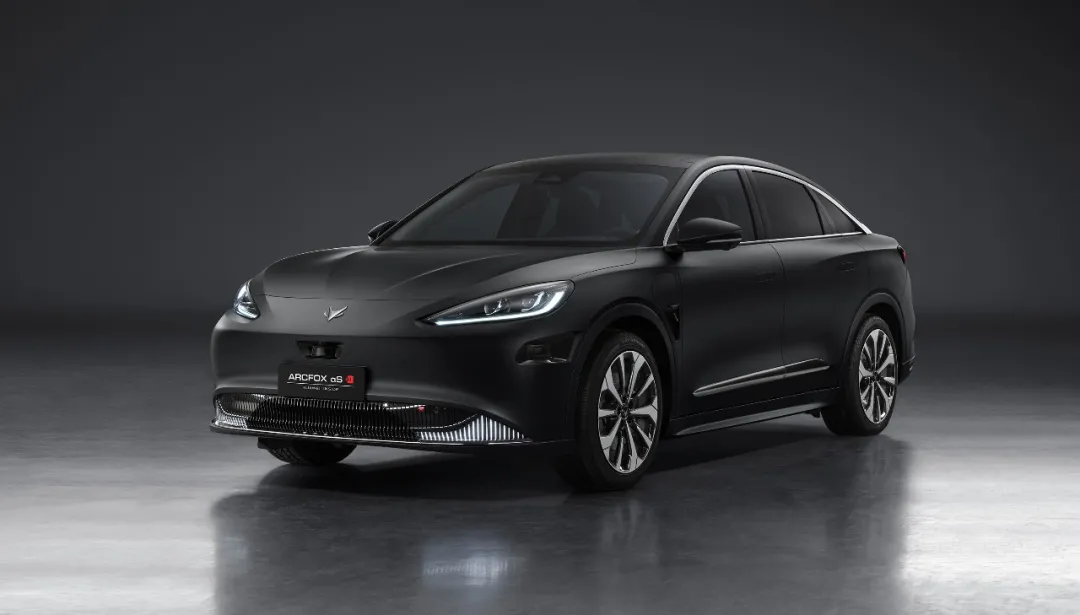Huawei P50 Launch Event: Expectations for HarmonyOS on Cars
Author: Mr. Yu
It has been over a month since Huawei officially released HarmonyOS 2, and what everyone is most looking forward to now is the Huawei P50 launch event on Thursday, July 29th.
From the official announcement, we learned that the theme of this launch event is “All things are renewed”. This suggests that everything will be different from the formal launch of HarmonyOS (referred to as “Hongmeng OS” in the following text).
Today, we will discuss the Hongmeng OS on cars, combining the existing public information, we will analyze the performance of Hongmeng OS on cars from aspects of functionality, interaction, and speculate on possible development directions. We hope that our perspective can bring some different thoughts to everyone.
OS No Longer Lags After Long-Term Use
Whether in live experiences or network videos, we can see that the application response speed of the Hongmeng OS car system is very fast.
We believe that there are two reasons for this:
The Involvement of the Car-embedded SoC Kirin 990A
As a product benchmarked against the car specification encapsulated version 8155 of the Qualcomm Snapdragon 855, the car specification Kirin 990A is mainly used in the automotive cockpit scene. Despite sharing the same name as the Kirin 990 chip used in Huawei Mate 30, P40 series phones, it is different in terms of process flow and core numbers of the chip, which is more suitable for the operation of Hongmeng OS in the car ecosystem.
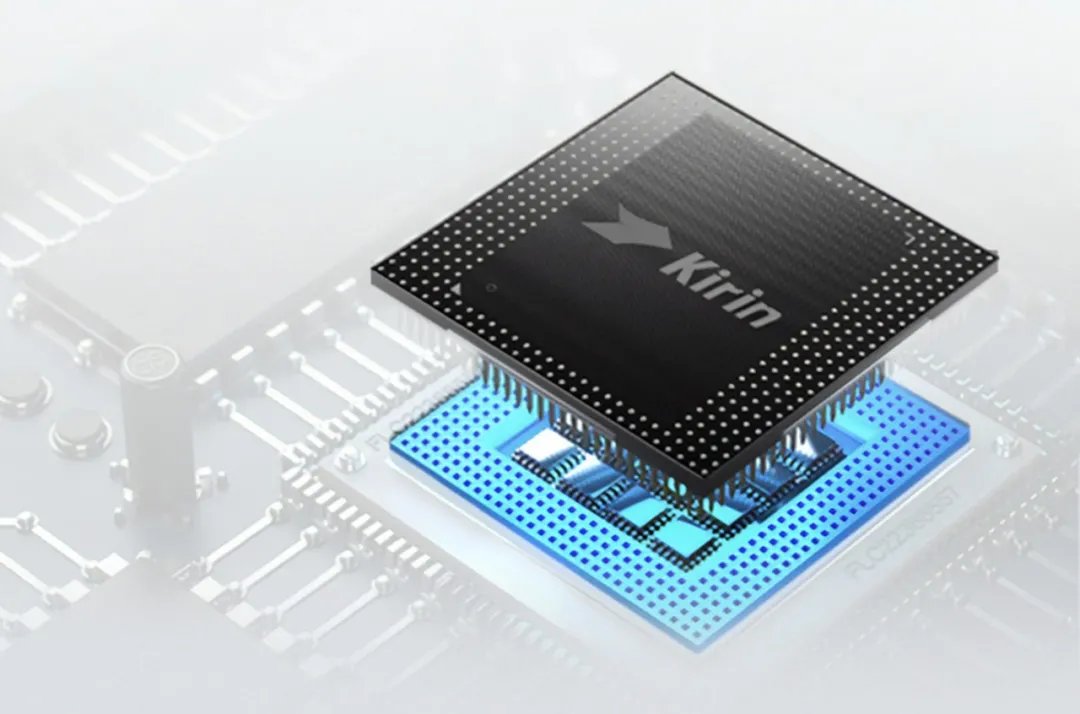
The Presence of Huawei’s Ark Compiler, or Similar Technologies and Architectures that Fit in the Car Cockpit
Compilation technology is a way to convert high-level languages such as C and Java into low-level languages that machines can understand, converting exquisite code into binary instructions of 0 and 1. The compiler is a bridge between software and chips, and its performance and efficiency directly affect the machine’s operating efficiency.
The Ark Compiler, which debuted in EMUI 9.1 in 2019, adopts a brand-new system and application compilation and operation mechanism. The semantics of all Java are statically compiled, directly translating Java language into machine language (static compilation), eliminating the additional overhead of dynamic compilation of the virtual machine, and achieving compatibility between development and operating efficiency.
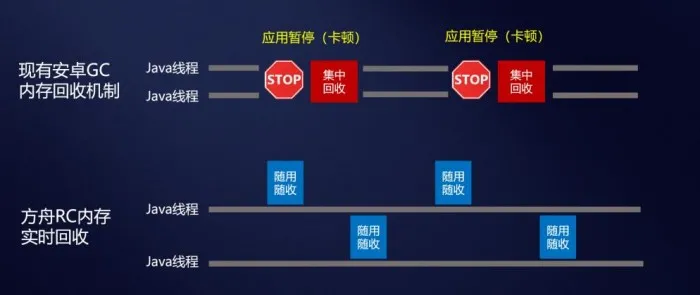
From the user’s perspective, the most intuitive feeling is:
- From opening to running, the overall smoothness of the application is improved;- Lowering the computational resource consumption of SoC reduces power consumption and improves the battery life of smartphones.
-
Providing users with a more persistent and smooth experience, solving the “genetic disease” of Android systems that will lag after prolonged use.
-
HarmonyOS is not Android, but the logic of compilation technology in product applications is similar.
-
Note that this is only a relationship between proxies.
-
In fact, the complexity of the structure between mobile phones and cars is too different, which is why “getting on board” is not a simple concept of transplanting or adapting, and the performance of the same application on different car systems is also different.
-
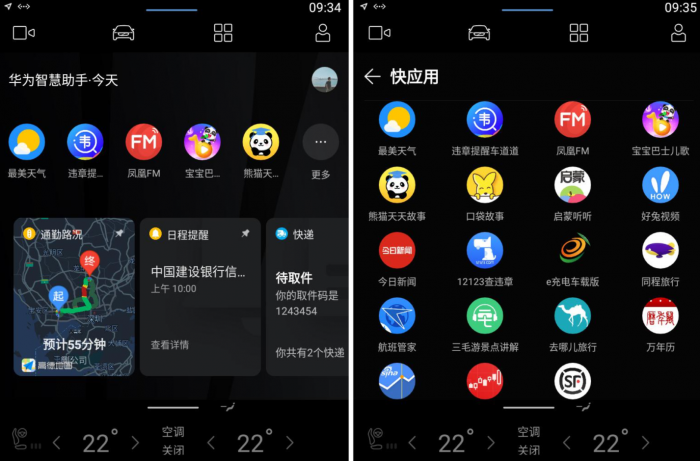
-
Extension of interaction habits
-
Since the debut of HarmonyOS, Huawei has been promoting the concept of everything is interconnected as its core selling point.
-
Not only seamless cross-device streaming media playback, but also cross-platform calls between home, car, and people have been amazing.
-
We noticed that Huawei also brought the air-gesture operation on smartphones to the HarmonyOS cabin.
-
A series of air-gesture operations such as flipping pages, playing, browsing, and screenshotting on the phone have become gesture operations to achieve paging, volume adjustment and other effects on the car screen.
-
According to multiple video judgments, the gesture response delay during the Shanghai Auto Show was about 1 second (1 s = 1000 ms), which is basically smooth, considering the reaction speed confirmed by the user visually.
-
Similarly, the interaction sensor on the mobile phone is the front camera, while the HarmonyOS cabin uses millimeter-wave radar in the car.
-
In recent videos, the delay of gesture interaction in the HarmonyOS cabin has been controlled at a very low level.
-
If the delay of about 50ms shown in the video is subjectively quantified, it is roughly the same as the level of low-latency true wireless earphone products or the smoothness of our daily brushing access cards and responding to door opening.
-
Therefore, in the car screen of the Harmony cabin, everyone saw the classic game “Fruit Ninja” again. Playing “cut fruits” with air-gestures in the car not only brings an improvement in interaction fluency brought by hardware redundancy but also provides space for developers’ imagination.
-
We believe that Huawei is not only trying to connect applications in the HarmonyOS ecosystem but also continues the operating habits.Obviously, Huawei does not intend to maintain the traditional operation mode that looks the most suitable across devices. The purpose of doing so is largely to ensure that users can obtain an integrated or approaching control experience in the HarmonyOS ecosystem across multiple devices, thereby reducing the learning cost of operating new devices on the one hand, and flattening the control experience when switching between devices on the other hand.
AI is On Board, More Than Just a New Scene
This must start with the rise of AI assistants in China.
Perhaps inspired by Apple’s Siri, or the successful paradigm of applying AI capabilities to mobile scenarios by HONOR Magic smartphones, or Xiaomi’s massive AIoT layout. In short, the existence of AI assistants in smart devices has become familiar to people rapidly since a few years ago.
During the period when the concept of AI assistants was most popular, Xiaomi even had a physical button on mainstream mobile models to wake up AI assistant Xiao Ai.
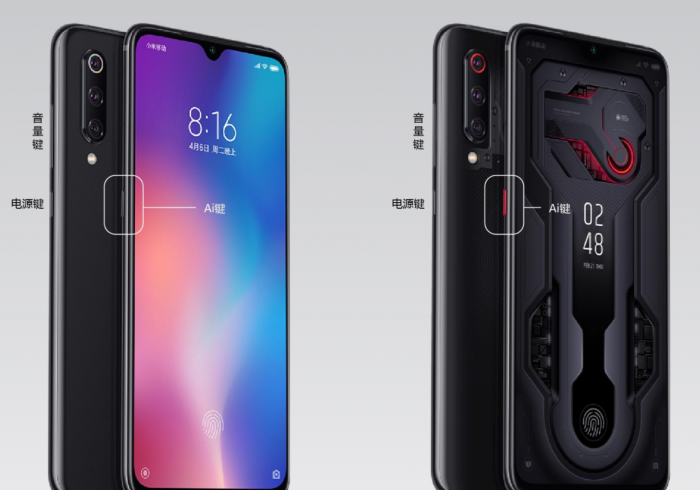
Later, OPPO’s Breeno, VIVO’s Jovi and other AI assistants firmly established themselves on their respective platforms. As designs became more mature, the “AI button” evolved into a long press or a quick double-click of a button on mobile phones, smart watches, and so on, to wake up AI assistants, avoiding the need to set up a separate physical button.
While Huawei’s AI assistant Xiaoyi is not as famous as Xiaomi’s Xiao Ai in social networks, with the rapid expansion of the HarmonyOS ecosystem in mobile, home, car, and office scenes, Huawei’s AI application capabilities will form a complete ecological closed loop and continue to expand with the successive participation of partners in various fields.
In a surprising way, the AI voice part in the HarmonyOS cockpit adopts a dual-engine mechanism of the vehicle-side and cloud-side, both based on Huawei’s self-researched technology. The advantage of this is that even if the vehicle is driving in an area where the network signal is poor or there is no signal, the intelligent voice of the vehicle-side can still work normally when the cloud-side cannot respond.
As a major AIoT manufacturer, Xiaomi is likely to adopt similar mode as MIUI, building an independent ecosystem on the car end and calling all AI capability applications through Xiao Ai.
Unless Xiaomi also fully enters the car scene in the form of an OS before its own car production line is put into mass production and competes with veteran players in the automotive field, it will be difficult to win this battle – this is not intended to show disregard but honesty, as we know it’s never easy.## Convenience in Ecology
Let’s first take a look at some information points about HarmonyOS that have been announced:
-
Before and after the Shanghai Auto Show, there were about 27 to 28 applications under HarmonyOS, all of which support voice control, and some support gesture control.
-
By the end of 2021, the number of applications supported by HarmonyOS will reach 100.
-
Third-party applications that have not yet entered HarmonyOS can also enter the car screen of HarmonyOS through mobile phone projection.
-
Third-party applications that enter the HarmonyOS car cabin through projection support reverse control within the device. Users can use the mobile phone application through the car touch screen, while also supporting voice control.
-
The above operations are not limited by the brand of the mobile phone. As long as it is an Android phone, the above operations can be realized.
We won’t interpret too much about this part, please feel free to ponder.
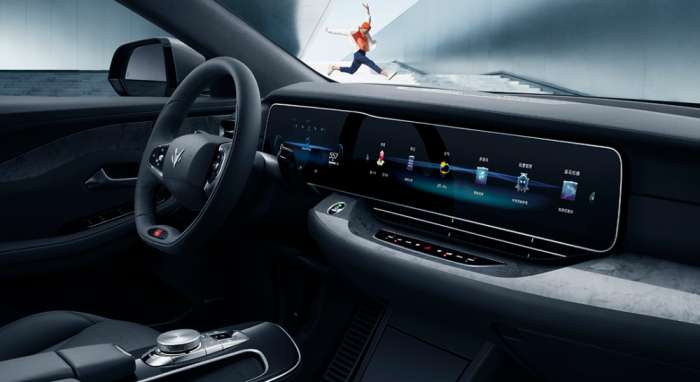
From the details in the video, we notice that applications in HarmonyOS can get a better interaction experience.
For example, when the user sends a multi-segment voice command “Open MiGu Music and play Dao Xiang” to the HarmonyOS cabin, the cabin can correctly respond to the command. The efficiency and convenience of voice interaction are largely guaranteed.
Let’s take a look at the following comparison.
After testing, taking the example of operating the air conditioner at home, the combination of MiJia ecology chain smart appliances and Xiao Ai smart speaker cannot achieve the one-time operation like this yet. Instead, it requires:
-
Mr.Yu: “Xiao Ai.” – Xiao Ai: “I’m here.” – Mr.Yu: “Turn on the living room air conditioner.” – Xiao Ai: “Turned on~” – The interaction ends.
-
Mr.Yu: “Xiao Ai.” – Xiao Ai: “I’m here.” – Mr.Yu: “Adjust the living room air conditioner to 26 degrees.” – Xiao Ai: “OK, the air conditioner has been adjusted to 26 degrees.” – The interaction ends.
The commands in these two groups, from wake-up phrases, response, issuing instructions to confirming the execution results, take more than 10 seconds to complete.
We cannot blame AI, after all, AI does not rely on common sense for understanding and communication.
But for users, most users need to speak less and execute accurately on the premise of safety, with minimal effort.
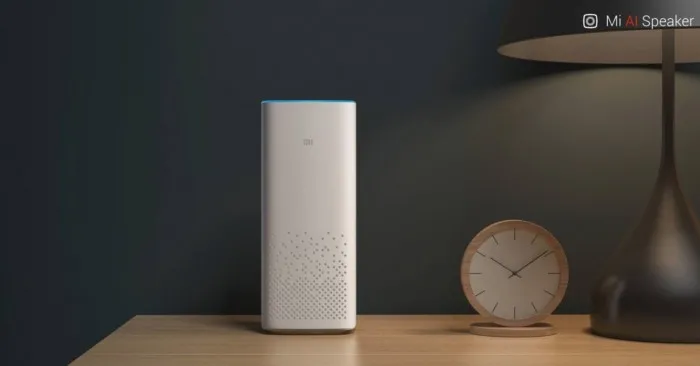 From a macro perspective, in the future, the HarmonyOS ecosystem is able to release Huawei native apps, automotive industry apps, or third-party apps. For all parties, a unified platform can achieve a higher market share.
From a macro perspective, in the future, the HarmonyOS ecosystem is able to release Huawei native apps, automotive industry apps, or third-party apps. For all parties, a unified platform can achieve a higher market share.
HarmonyOS, based on the microkernel, combines the advantages of Android and QNX. In terms of the higher cost of adapting software applications without Google GMS support in domestic Android, HarmonyOS leverages Huawei services to achieve faster and lower-cost adaptation. The advantage of back-end ecosystem adaptation is evident.
One small issue
During the Shanghai Auto Show, we saw AR-HUD integrated into HarmonyOS cockpit.
In the demo experience, we found that AR-HUD in the HarmonyOS cockpit has a certain requirement on the visual angle. Miss Michelin, who is working for the GeekCar editing department and was with us, couldn’t see the information displayed on the AR-HUD at her altitude, and the AR-HUD device cannot make adjustments.
We hope that before the cars go into mass production, Huawei and its OEM partners can pay attention to this issue and solve it. After all, in the video, a young man even connected his Xbox One controller to the car and played the game on the AR-HUD.
If there is still a requirement like this, it will be a bit embarrassing.
In conclusion
Behind these appearances, the HarmonyOS cockpit carries too many of Huawei’s ambitions.
Compared with the traditional style of foreign car companies preferring to develop based on QNX or Linux, most domestic car companies will customize the cockpit OS based on Android to pursue higher intelligence.
But as we said before, it is unavoidable to invest massive resources from scratch and wait without Google GMS support.
Currently, unless the growth rate of new partners joining the HarmonyOS ecosystem is always unsatisfactory, according to the current trend, HarmonyOS has the ability to challenge existing underlying OS development patterns such as Android, QNX, and Linux.
This article is a translation by ChatGPT of a Chinese report from 42HOW. If you have any questions about it, please email bd@42how.com.
